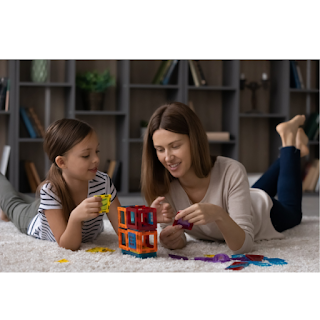As a parent, you may not realize the many life skills your child's spatial awareness develops. It has been proven that this crucial skill is vital to understanding objects and their placement in space, and for kids who grow older, it can help with everything from navigating a crowded room to reading maps and graphs.
What is spatial awareness?
Spatial awareness is knowing one's own location, spatial orientation, or sense of direction. It can be determined by asking questions about the surroundings. Spatial cognition is crucial for everyone ages, but children need to develop at a young age. This incredible skill will help them grow up to become extraordinary individuals.Why is spatial awareness important for children?
Spatial awareness is the ability to know where one's body is about their surroundings. It helps us navigate through space, understand what direction we're headed, and find our way back home. Kids who are adept at spatial awareness are more prepared to succeed in school because it helps with language, math, and even reading comprehension.
ABA Therapy for Spatial Awareness
ABA is a behavioral therapy that helps children develop skills to manage their external and internal responses to stimulations in their environment. This includes providing a systematic program of rewards and consequences to help a child learn from past experiences. One of the critical components of this therapy is spatial awareness, which teaches children how to process information from their five senses to understand what they see, hear, taste, touch, and smell. One of the most essential skills children need to learn is spatial awareness. When they cannot understand where objects are about themselves, it can cause difficulties in their everyday lives.
Spatial Awareness in Social Setting
Children need to learn the concept of spatial awareness in social settings. This is because they will be expected to understand interpersonal space, including how close or far away they should stand from another person. From an early age, children should be taught that physical closeness is not always an
indication of intimacy. It is a crucial skill for children because it helps them develop their sense of self, body orientation, spatial reasoning, problem-solving abilities, social skills, etc.
Ways to improve spatial awareness with ABA Therapy
Children with autism spectrum disorder may have less developed spatial awareness skills, which can be a challenge in daily life. ABA therapy teaches children about where things are in their environment and how to interact with those things. Children who don't have spatial awareness usually need help from others regularly. For example, guiding them as they walk down a corridor or through a room filled with furniture. This can limit their independence and prevent them from being as successful as other children in daily life. Spatial awareness helps humans to understand what is happening around them- how objects move and how to use those objects. A parent teaching a child to ride a bike, for example, will often talk the child through each step of the activity. This is spatial awareness training as the parent guides their child through steps- moving from one position to another. It connects to our understanding of the world and allows us to predict where objects are when they are not under direct observation.
Conclusion
Spatial awareness is critical because it involves the skills of perception, orientation, attention, memory, and mental imagery. These are necessary skills for understanding how objects are related in space. Children who have these skills are more intuitive when figuring out what’s happening in their environments.
I hope you found this blog informative and the information helpful. If you are interested in learning more about Applied Behavior Analysis and the services Behavior Matters, LLC provides, please email info@behaviormattersllc.com.


No comments:
Post a Comment